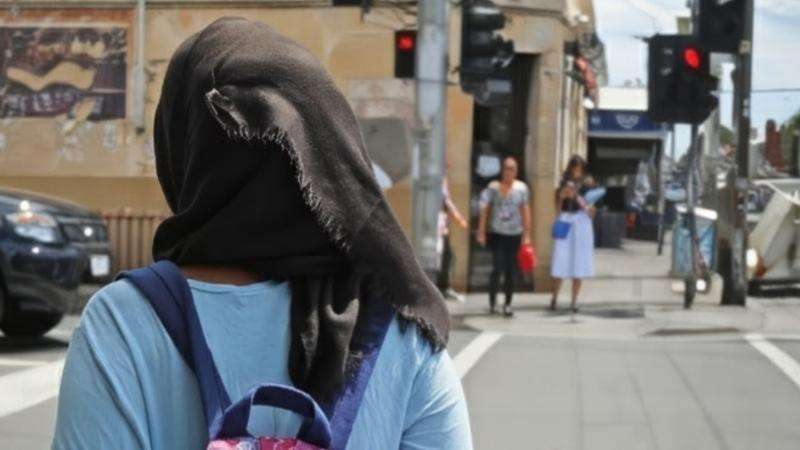Constructed in the desert of Abu Dhabi, the imposing BAPS Hindu Mandir is referred to as a "new symbol of cross-cultural cooperation" with the intention of igniting optimism for unity and tolerance.
Just outside the glittering city of Abu Dhabi, in the afternoon sun, the seven enchanted spires of a Hindu mandir, or temple, made of pink sandstone, sparkle in the scorching desert heat.
Encased in intricate hand carvings, the 30-meter-tall temple is colossal in numerous aspects. Not only is it the biggest traditional Hindu mandir in West Asia, but it's also the first in the history of the United Arab Emirates.
A decade earlier, its existence would not have been thought possible.
Now it glows in the desert as a powerful symbol of acceptance, collaboration and peaceful coexistence, at the heart of a 27-acre site gifted by UAE President Sheikh Mohamed bin Zayed Al Nahyan.
As the Muslim world has celebrated Eid, and Christians Easter – a reminder of the hope of new life – there's no better time to underline the significance of the mandir as the birth of a new time of interfaith tolerance and understanding.
For Brahmaviharidas Swami, who leads external relations for Bochasanwasi Akshar Purushottam Swaminarayan Sanstha (BAPS) mandir in Abu Dhabi, the project was "scripted in heaven and is now being screen played here on earth".
It represents a thrilling moment of meaningful harmony that calls to mind a Sanskrit saying in the ancient tales of the Panchatantra:
"This person is our friend, and this person is not. But for the liberal, broadminded person the whole world is indeed one family."
The historic project began with a profound policy shift toward cultural and religious integration. While the UAE has long committed to religious diversity, it is only in 2 the last two years that a purpose-built synagogue, Christian church, and now the grand Hindu mandir have been inaugurated in Abu Dhabi.
Many years earlier on 5 April 1997, His Holiness Pramukh Swami Maharaj, then spiritual leader of BAPS, visited the desert and offered prayers for a mandir in Abu Dhabi that would “bring countries, cultures and religions closer together.”
By 14 February this year, his bold vision was set to transform the intercultural landscape not just locally, but globally.
Sheikh Nahyan bin Mubarak Al Nahyan, the UAE minister of tolerance and coexistence, joined Indian Prime Minister Narendra Modi and BAPS current spiritual head and creator of the mandir, His Holiness Mahant Swami Maharaj, for the mandir’s inauguration.
Ambrish Limbachia, volunteered during the grand opening.
He said: "It’s a once in a lifetime breakthrough and glimpse of unity that brings hope for humanity.
“This is history in the making; it can't be underestimated. Tolerance is one of the vital strands that holds communities together and builds friendships between cultures."
The building of the Hindu mandir is a reminder that global harmony remains tantalisingly within reach.
On land gifted by a Muslim leader, with a Christian architect, Buddhist designer, and a Sikh, Jain, and Zoroastrian team, it’s a testament to Indian craftsmanship, modern engineering – and cooperation.
Proof positive that shared human values and service to something greater than ourselves bring people together. Even the supply routes were a testament of collaboration – Dubai opened a dedicated corridor into its port for the mandir’s materials.
The numbers behind the project are staggering.
Over 14,500 tonnes of pink sandstone and five tonnes of milky-white Italian marble were used in construction. Sixty thousand people from around the globe donated 690,000 man-hours to the project.
Two thousand Indian artisans from Rajasthan and Gujarat breathed life 3 into the stone, creating 9,000 figurines and 402 pillars, none of which is the same design. The building is breathtaking.
It’s a love letter not just to the Hindu religion but also to humanity, and mutual respect and peace. Symbolising the unity of the seven emirates, the mandir's seven spires house shrines of revered Hindu deities.
Everywhere are mentions of other cultures and continents. The intricate carvings tell stories from ancient Indian scriptures, Arabia, Africa, China, and the Aztecs. Inside the mandir, the Dome of Harmony represents the five elements shared by all humanity: earth, water, fire, air and space.
Even on the hottest days the site offers relief, with cool prayer halls, exhibitions, a visitor centre, library, children's park, and gardens for reflection, where water features represent the three sacred rivers of India – Ganga, Yamuna and Saraswati.
The mandir, which fully opened to the public on 1 March, uses a blend of education and community activities to underpin the BAPS values of bringing people together, peace and service to humanity.
And it’s a place where diversity is celebrated. “This is not just for Hindus," says Limbachia. “Everyone is welcome. We might have differences, but we share the same human journey.
With contributions by Ambrish Limbachia




_7.jpg)



.svg)

